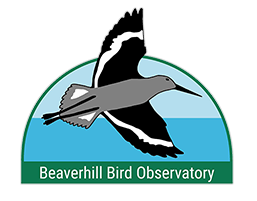Other Programs
Great Canadian Birdathon
What is it? The Great Canadian Birdathon (previously the Baillie Birdathon) is an annual fundraiser through Bird Studies Canada to raise funds for Canadian bird research and conservation efforts.
When is it? Late May.
How does it work? the BBO assembles a team of top-notch birders to see how many species we can identify in a 24 hour period.
Where does the money go? Funds raised are split between our observatory and Bird Studies Canada. You can contribute by donating or by helping us find birds!
Natural Nest Monitoring
What is it? When bird nests are located by BBO staff or volunteers, bird nest cards are filled out to record nest contents.
When does it happen? During the spring and summer. Nest searches and data entry are generally done on rainy days when mist-netting is not possible.
How does it work? The nest contents are then monitored and, if possible, the young are banded once they are old enough. Nest cards are submitted to Nature Alberta and copies are kept in BBO files. This monitoring program has gone on since 1984!
The Elson Bluebird Trail
What is it? A network of hundreds of Mountain Bluebird nestboxes in areas east of Edmonton and in rangeland around Beaverhill Lake which are monitored by student interns every year.
Why “Elson” Bluebird Trail? Elson Olorenshaw established this monitoring program in 1995. He maintained and expanded each year and by 2002 he was monitoring 405 nest boxes near Elk Island, Beaverhill Lake, and Fort Saskatchewan. The Elson Bluebird trail was passed on to BBO at the end of 2002.
How does it work? Student interns visit the nests to determine their status and band the young from each nest. Student interns monitored around 450 boxes in 2013 and 2014. The number of current Mountain Bluebird boxes that are up is approximately 530.
Bat Monitoring
What it is? Bat populations are monitored at BBO using an acoustic recording unit and over 40 bat boxes that have been installed throughout the Natural area.
How does it work? The bat detector, deployed in 2012, records bat echolocation to identify the diversity of bat species on site. Bat boxes are actively monitored every season to see how many bats are roosting on site.
Mammal Surveys
What is it? Three trail cameras are set up in the Natural area to monitor mammal populations on site in addition to snow tracking surveys.
How does it work? Photos are examined at the end of each field season and the results are submitted to Alberta Fish and Wildlife as part of our provincial permit requirements. These surveys allow us to know what species are using the Natural Area, including stealthy species that may otherwise go undetected. This data also allows us to determine the relative abundance of each species in the Natural Area.
What have we found? There are a number of mammals that call BBO their home, including Mule deer, Moose, White-tailed deer, Snowshoe hare, Racoon, Coyote, Porcupine, Northern flying squirrel, and a variety of Weasel species.
Nocturnal Owl Survey
What is it? There is a national strategy for monitoring nocturnal owls where owls are located and counted by volunteers who use speakers to call in the birds. BBO leads the Alberta component of this national survey.
How does it work? Owls are surveyed by volunteers who find them by broadcasting a call that owls recognize as their own species. Broadcast surveys are one of the most widely used techniques to locate and survey owls. They work well because owls ”hoot” to communicate with their mates and tell other owls where their territory boundaries are. Imitating these owl vocalizations can invoke vocal responses from many species of owls and lets us find them when they would otherwise be silent and hidden in the darkness.
When does this happen? Volunteers are needed to help run owl surveys during March, April, and early May. Only two nights (approximately two hours each night) are required for these surveys.
“Hoo” can do it? Volunteers, like you!
How? Volunteers will have routes assigned to them along roads, but can decide what area of the province they would like to work in. The volunteer will need a reliable vehicle (this is a roadside survey), a CD/tape player (we have some that can be borrowed), a flashlight or headlamp, a thermometer, warm clothes, willingness to learn the calls of the owls in your survey area, and lots of enthusiasm. We also recommend you have someone to survey with for safety reasons.
If you would like more information or would like to participate in a survey, please contact Lisa Priestley at lisa@beaverhillbirds.com. See Papers, Reports and Manuals for a copy of Guidelines for Nocturnal Owl Monitoring in North America.

